We’re often asked which candle wicks work best with which waxes, especially with the number of wick types available increasing every year. You may have everything else perfect with your candles, however the wrong wick can mean your candles aren’t burning as well as they could be.
This guide provides an overview for selecting the best wick for your candles, and getting the best results from whichever wick you choose.
HTP Wicks:
Using a blend of cotton and braided paper fibres, HTP wicks provide a rigid and robust wick for candle making. HTP wicks are self trim and have a softer burn, making them ideal for soy wax candles.
CDN Wicks:
Using a flat braid style, CDN wicks provide greater flexibility to candle makers. As CDN wicks offer enhanced rigidity and are zinc-free, allowing makers to choose from a wide variety of waxes in production. These wicks are ideal for palm, paraffin and soy waxes.
Wedo Eco Wicks:
These are flat, coreless wicks made from interlacing pure cotton and thin paper filaments, which provides a stable, consistent burn. These wicks are a great choice when using higher concentrations of fragrances and dyes.
CL Wicks:
CL wicks (cotton & linen) are innovative flat wicks, made from unbleached cotton, interwoven with a linen thread. These wicks offer excellent rigidity, and minimize afterglow and smoking. They’ve been specially developed for vegetable and heavily fragranced mineral waxes and are a great choice when working with our rapeseed and coconut waxes.
TCR Wicks:
These are a flat-braided wick, made from long strands of ring-spun cotton and paper, with an outer jacket, giving the wick a stiffer structure. These wicks provide an excellent burn profile with vegetable-based waxes like soy and rapeseed.
Stabilo Wicks:
Stabilo wicks are coreless, flat braided wicks with a special paper filament woven around them. This promotes maximum and consistent capillary action while ensuring a wick trimming flame posture. These wicks work well with highly scented paraffin and blended waxes, like rapeseed and coconut, and other vegetable-based waxes, which are generally harder to melt.
Wooden Wicks:
Wooden wicks are a more modern and increasingly popular choice and produce a crackling flame reminiscent of a fireplace. These wicks typically produce a lower, wider flame for a slow, even burn.
How should I choose my wick?
You’ll likely see four numbers when selecting a wick: Burn Diameter, Wick Length, Diameter and Tab Height. These all provide useful guidance for the candle product you're looking to make.
A good starting point for testing is to measure the diameter of your container and match this to the burn diameter of your wick.
It’s important to note that results may vary when using different glassware, waxes and fragrances. We recommend checking the specifications of the containers you’re using and always testing your candle when working with new supplies.
Colour and fragrance type impact the burning process, as some are harder to burn and need a larger wick. It's important to change variables such as wax, wick, container or colour as a systematic testing process.
Consider the entire burning process in your testing as candle wax burns out and then down for short durations, the wax may not reach a full molten pool and residual wax can remain on the sides of the container. If you’re looking to burn the candle for shorter or longer periods, adjusting the wick size is important.
As a rule of thumb, for longer burn durations go down in wick size and for shorter burn durations, go up in wick sizes. In our experience, an average burn time is 2-3 hours.
Why do I need to test when making candles?
Testing is important for the long-term viability of your business by maintaining quality control and assurance for all of your candle products. We recommend burning a minimum of 3 candles to ensure consistency. As mentioned above, any changes to the variables in your candle production should be monitored and implemented systematically.
The following video is quite long but worth taking the time to watch to gain a better understanding of what to look for when test burning your candles:What should I do next?
To find out more information about choosing the correct wick, why not take a look at our FAQs or our Resource Centre.
If you’re unable to find the information you're looking for, we’re always happy to help via our online chat, email or telephone.
This blog was originally posted in February 2018 and updated in October 2022.


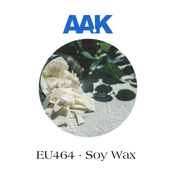

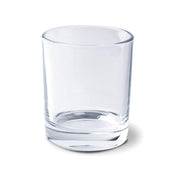
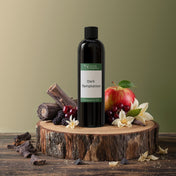
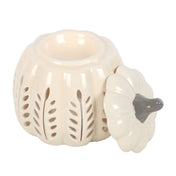
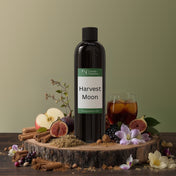
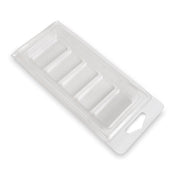


17 comments
Hi, I am using a 70mm diameter glass vessel and London Luxury A05 coconut soy wax with and 8% fragrance – could you give your expert advice on which wick/s you feel would work best with this – thank you
———
NI Candle Supplies LTD replied:
We’ve not tested this wax ourselves, Sue but would suggest trying the HTP104 or HTP105 wicks from our range for your own testing.
Dobry den, rada bych se optala na vhodny knot pro hlinikove nadoby o prumeru 6,3 cm a vyskou jen 2,5 cm (mala nadoba). Pouzivam vosk cargill c-3 nebo kerax 4135 (dost podobne) …jaky knot htp byste mi doporucili? Zatim se nejvice osvedcil knot stabilo 8 ale za tepla nebyla svicka citit. potrebuji vykonejsi knot (bez prepalu) moc dekuji
———
NI Candle Supplies LTD replied:
Trying to wick such a shallow candle will be tricky. We suggest trying the HTP 105 for a single wick option and the HTP 52 for double wicking; which may be better given the depth of the candle.
Hi there, I make wax melts using a parasoy blend, but wanting to make some pillar candles and I’m so unsure of which wicks are good for parasoy candles. Could I have some ideas? Thankyou
———
NI Candle Supplies LTD replied:
Thanks for your comment Olivia. We would suggest contacting the supplier of the wax you are using to ensure it is designed for the making of pillar candles and to then request some suggestions on suitable wicks. You may also email us with the name of the exact wax you are using and we would be happy to try and offer some guidance.
I have a 3 in in diameter vessel, I use your coconut apricot wax and I use 8% fo, for two weeks I’ve been trying to wick this beast to no avail, got any ideas on wicking??
———
NI Candle Supplies LTD replied:
Thanks for your comment, Julie. We don’t offer a Coconut and Apricot wax (although it does sound lovely) but if you can email us at support@nicandlesupplies.com with information on the oil used and wicks tried to date, we’d be happy to try and assist.
Hi
I am new to this and just don’t know what wick I should buy for a 20cm x 3cm pillar candle
Kind regards
Karen
———
NI Candle Supplies LTD replied:
Welcome to the world of candle making Karen! Unfortunately, none of our wicks are long enough for your project – you will need to source a wick that is 25cm long to give you room to work during the making process and has a burn diameter of 3cm. You may find that spooled wick is best suited for this purpose. We would suggest Googling spool wick and there should be a few suppliers who can assist with this length. We hope that’s some help.
I have a 6inch diameter mold and I don’t know what wick to use . Do I need 2 wicks?
It’s a Peony mold measures 6 inches in width
———
NI Candle Supplies LTD replied:
Thanks for your comment Wendy. Given the diameter of your mould is quite large, our thoughts are double wicking is the way to go. From our range, we’d suggest starting with the HTP 126 wick; however you may need to go to the HTP 1212 wick depending on your testing results.
Hello, the jars I use are 63mm in diameter and 80mm in height. I use yer Nature Wax C-3 100% Soy Container Wax, what do you would be the best wick to use. Thanks in advance.
———
NI Candle Supplies LTD replied:
Thanks for your comment Jenny, we’d suggest testing the HTP 83 wick and adjusting up or down from there depending on your testing results.
Hello,
Can you advise the best TCR wicks to use on 20 & 30cl jars please?
———
NI Candle Supplies LTD replied:
Thanks for your comment Lisa. We don’t sell TCR wicks, so are unable to offer size suggestions on this particular wick; sorry. If you email us with the dimensions of the 20cl and 30cl vessels you’re using; we’d be happy to offer suggested sizes in the HTP wick range which we offer.
Hi, I have made some peony candles (3" in diameter) from a mix of soy and beeswax. What would be the best wick to use for these to have them as stand alone candles (ie not on top of a container candle). Also, if I were to change the wax to a pillar wax, what wick would you recommend for that please? Thanks
———
NI Candle Supplies LTD replied:
Thanks for your comment Rebecca. You could try the HTP 105 as a starting point with either wax type, you would need to test for suitability and adjust your size up or down depending on your testing results.
Hello, I’m making beef and venison tallow candles, 25% beeswax and have troubles keeping a wick burning. I do not see tallow listed above, do you have a wick suitable for keeping tallow candles burning?
———
NI Candle Supplies LTD replied:
Thanks for your comment Suzanne. We don’t have specific experience in making candles from tallow and beeswax but the same process would apply in that you need to ensure the size wick being used is large enough for the diameter of your vessel, so that it does not drown or tunnel. Given you are using a unique combination for your candles, it will then be a case of testing a range of wick sizes based on how the suggested wick performs. Good luck!
Hi there
I am interested in making candles (hobby to begin with), I would be grateful if you could advise the best WAX and WICKS to use please.
I was gifted a start-up kit which has 4 small metal containers in it (7cm diameter, 7cm high). This kit contained beeswax and some fragrance oils, however, I would like to purchase additional materials and would be grateful for your professional advice.
———
NI Candle Supplies LTD replied:
Great to hear you’re interested in learning how to make candles Aisling! We would suggest starting with Golden Wax 464 and the HTP 105 wicks based on the diameter of the vessels you have there. We’d also suggest having a read through our Resource Centre for lots of useful articles to help get you started on the right foot with your candle making journey.
Hi, I’m trying to recycle old wax from assorted candles and regardless of the size of containers they all burn until there is a small circle of melted wax (approximately 1/2cm) and then drown leaving the rest of the candle untouched?
I have some candle colours and essential oils but I rarely have a nice smell either
———
NI Candle Supplies LTD replied:
Thanks for your comment Cilla, it sounds like the wick size you are using for your candles is too small and this is causing them to tunnel. Please reach out to us via email letting us know the diameter of the vessels you are using and we will do our best to assist further.
Hi this article is super helpful. I think I’ve got my head around candle wicks for fragrance oils with a rapeseed and coconut wax. I have also been trying out essential oil candles but I am really struggling to find the right wick. I’ve tried a variety of CL wicks in a 20cl jar with coconut and rapeseed and they don’t burn very well at all. The melt pool doesn’t reach the edges. What wicks would you recommend for essential oils and more complex blends with heavier oils?
Thanks
———
NI Candle Supplies LTD replied:
You’re very welcome Claud. CL wicks usually work quite well in the Rapeseed and Coconut Container Wax, it may be that a bigger size again is needed in order to achieve the correct melt pool or possibly that the percentage of oil being used needs to be reduced to prevent the wick from clogging (this is a common problem with heavier oils). If the supplier of the CL wicks has assisted with the correct size and you are still not having success, then we would suggest trying the HTP wick as an alternative.
Hello When measuring your candle jar, do you measure the top of the jar, measuring the internal diameter width for the wick size please?
Michelle
———
NI Candle Supplies LTD replied:
Thanks for your comment Michelle, that’s correct. If using our vessels, we have the internal dimension listed in the product description to assist also.
Kindly advise me on the most suitable wick for 20 Cl tin container for soy wax. Also wooden wick for 30cl candles in glass Soy wax. Thank you. Margaret
———
NI Candle Supplies LTD replied:
Thanks for your comment Margaret, the wick size required will depend on the diameter of your containers. Please email us with this information at support@nicandlesupplies.co.uk so we can assist further.
Hi I’m using paraffin container wax for my Christmas candles and having no luck with the wicks I use a30 cl jar and 8% fragrance oil I think I’ve tried nearly every wick under the sun and loosing the will to live lol I hope you can help thanks x
———
NI Candle Supplies LTD replied:
Thanks for your comment Andrea, we need some more info in order to help; please email us at support@nicandlesupplies.co.uk for support.